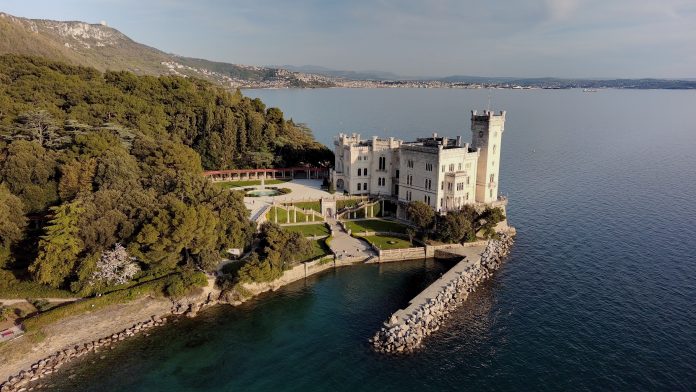by InTrieste
Miramare Castle, one of Italy’s most iconic landmarks overlooking the Gulf of Trieste, will be closed to the public from January 27 to January 31 to allow for essential safety upgrades and restoration work. The temporary closure is part of a broader initiative to align the castle’s facilities with European safety regulations and to preserve its historic heritage.
While the castle itself will be off-limits, visitors can still enjoy the surrounding historic park, open daily from 8 a.m. to 4 p.m., and the contemporary art exhibition Naturae, hosted at the castle’s Stables from 10 a.m. to 6 p.m. Additionally, guided tours of special areas, such as the Ducal Bath, will continue as planned, replacing the usual Kitchen tour.
Major Restoration Efforts Underway
Starting January 22, scaffolding will once again adorn the grand staircase to facilitate the reinstallation of historic panoplies, weapons, and armor that have long decorated the museum’s first-floor access. These pieces were removed for restoration and featured in the Kosmos exhibition, which concluded last summer.
The scaffolding will also enable the restoration of a significant architectural feature: the large stag antlers beneath the first-floor balustrade. Furthermore, critical work on the highest window frame will address long-standing issues with water infiltration and structural stability. This restoration, unprecedented in the castle’s history, is part of a comprehensive program to conserve its window frames, a project that has been ongoing in recent years.
Enhancing Visitor Experience
February will mark the debut of a redesigned bookshop within the museum, managed by CoopCulture. The new layout aims to improve accessibility and create a more welcoming experience for the castle’s diverse audience.
Miramare Castle, built in the mid-19th century as a residence for Austrian Archduke Ferdinand Maximilian and his wife, Charlotte of Belgium, is not just a testament to imperial grandeur but also a beloved cultural hub. Despite the temporary closure, its commitment to preservation and innovation ensures that the site will continue to enchant visitors for generations to come.





























